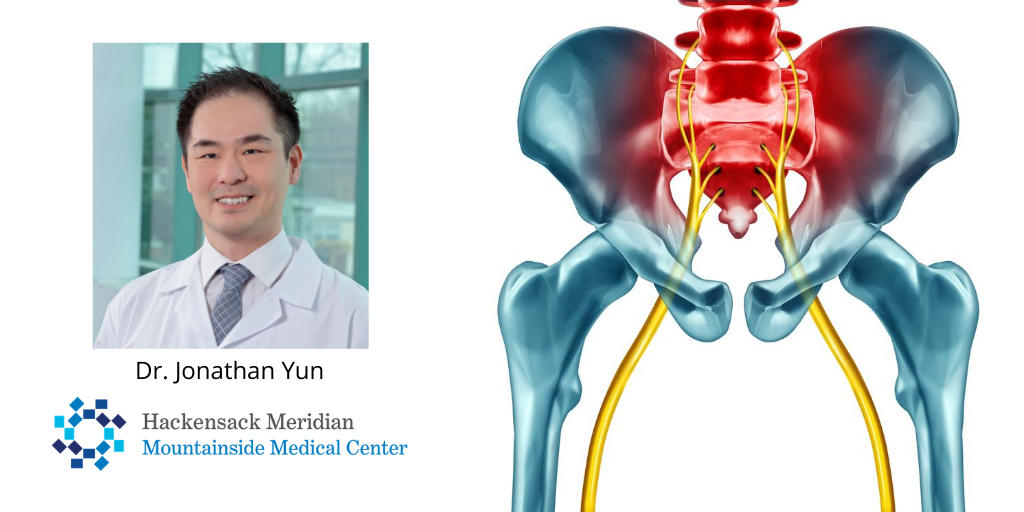COVID-19 stay-at-home guidelines have created many lifestyle changes, including new home workout routines and do-it-yourself home improvement projects. Doctors warn, however, that increased activity for those not used to certain exertion levels can lead to strains and pains, including one of the most common nerve conditions, sciatica (sy-at’-ick-uh).
“While there are many reasons sciatica can occur, it’s a pain that is often associated with injuries from over-activity,” said Jonathan Yun, M.D., neurosurgeon with the Montclair Neuroscience Institute at Mountainside Medical Center. “With people staying at home, not working and finding more time during the day to be active, especially during the summer, I have noticed an increase in patients experiencing sciatic nerve pain.”
What is sciatica?
Sciatica, also known as radiculopathy, occurs when the sciatic nerve, which begins in the lower back and splits to run down each leg, is pressed or pinched. Associated pain is described as traveling down the leg to the foot and can vary from a dull sensation or soreness to severe stabbing, radiating pain. In some cases, the pain can be so intense that it becomes difficult to walk or stand.
“Sciatica can affect people at any age, including those who are older and are prone to arthritis,” said Yun. “While the most common cause may be a herniated or slipped disk causing pressure on the nerve root, sciatica symptoms can also be triggered by years of wear and tear, bending, twisting and stretching for long periods of time.”
The most common symptoms of sciatica include:
- Lower back pain spreading from a person’s bottom and back of thigh
- Pain that travels from the bottom toward the foot
- Numbness or weakness (in severe cases)
“One misconception about sciatica is that this type of leg pain always comes with back pain,” said Yun. “This is not always the case. Usually pain is more severe in the leg than the back. You can also experience no back pain at all. If a patient comes in with pain that goes down a certain part of their leg, I can almost guarantee I know exactly what nerves are involved, simply based on the pattern of pain.”
Who is at risk for sciatica?
While certain health conditions, such as obesity, can trigger sciatica, several other factors may contribute to a person having a higher risk, including:
- A current or previous injury to the lower back or spine
- Weakened core muscles (of the back and abdomen)
- A job that requires heavy lifting or prolonged periods of sitting
- Improperly lifting objects, such as when weight lifting or picking up a heavy box
- Osteoarthritis
The good news is with the right treatment, sciatica can often be relieved.
What are common treatments for sciatica?
If symptoms of sciatica have been persistent and ongoing, it’s important to be evaluated by a physician because sciatica involves irritation or injury to the nerve. If it goes untreated, it could lead to a higher degree of nerve injury.
Common treatments for sciatica include:
- Nonsteroidal anti-inflammatory (NSAIDs) medications, such as ibuprofen
- Heat or cold applied to the sore muscles
- Movement, which helps reduce inflammation
- Physical therapy
- Minimally-invasive surgery
“Surgery is really at the end of the treatment spectrum. It’s always an option, but it’s never the first option. We always try to relieve pain from sciatica first through conservative measures, like medications and therapy,” said Yun. “We explore surgical options if those measures do not work. In many cases, surgery has provided immediate relief and allowed patients to return home the same day and get back to enjoying life virtually pain free.”
If interested in learning more about sciatica, click here to register for our next Sciatica and Spine Injuries virtual seminar presented by Dr. Yun. For more information on the Montclair Neuroscience Institute at Mountainside Medical Center, visit mountainsidehosp.com/services/neuroscience-institute.
Original post https://alertarticles.info
